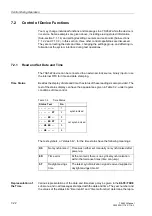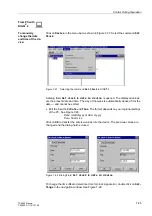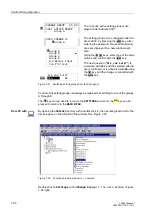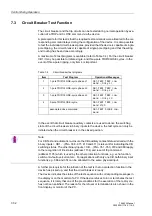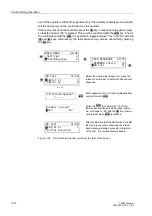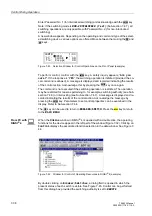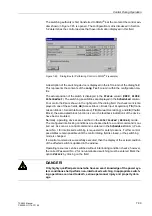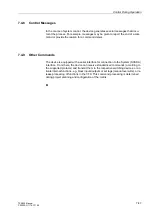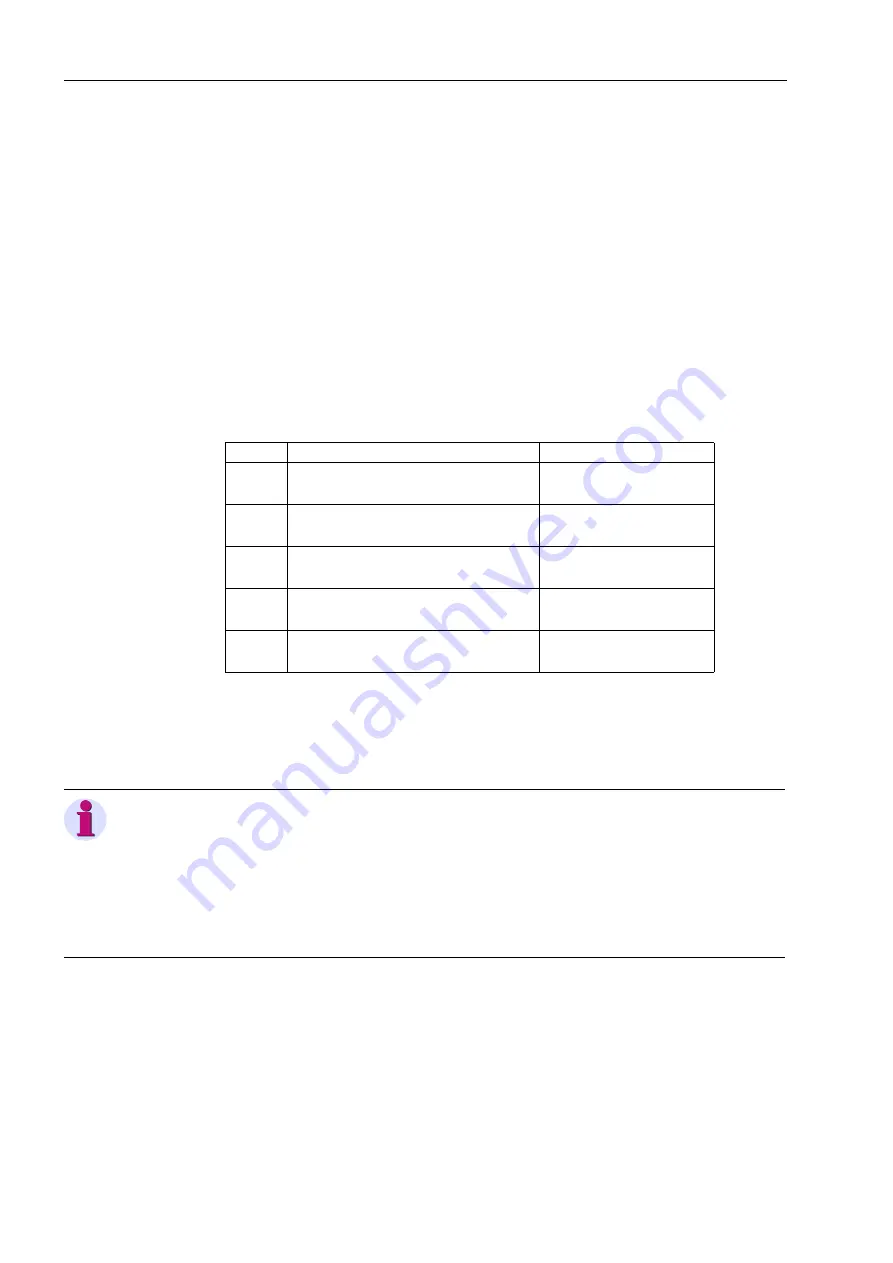
Control During Operation
7-32
7SA522 Manual
C53000-G1176-C119-2
7.3
Circuit Breaker Test Function
The circuit breaker and the trip circuits can be tested during normal operation by exe-
cution of a TRIP and CLOSE command via the device.
A prerequisite for this test is that the required test commands were allocated to the cor-
responding command relays during the configuration of the device. It is also possible
to test the individual circuit breaker poles, provided that the device is capable of single-
pole tripping, the circuit breaker is capable of single-pole tripping and that the wiring
and routing has been done accordingly.
A maximum of 4 test programs is available (refer to Table 7-4). For the circuit breaker
CB1 it may be possible to initiate single- and three-pole TRIP/CLOSE cycles. In the
event of three-pole tripping, only item 4 is important.
In the event that circuit breaker auxiliary contacts are used to derive the switching
state of the circuit breaker via binary inputs to the device, the test cycle can only be
initiated when the circuit breaker is in the closed position.
A further prerequisite for the initiation of the test is that no protection function in the
device has picked up, and that the circuit breaker is ready.
The device indicates the status of the test sequence with corresponding messages in
the display or on the monitor of a PC. If the device refuses to run or terminates the test
sequence, it is likely that one of the preconditions for the execution of the test cycle
has not been satisfied. The reason for the refusal or termination is also shown in the
front display or monitor of the PC.
Table 7-4
Circuit breaker test programs
Item
Test Program
Operational Messages
1
1-pole TRIP/CLOSE–cycle phase L1
&%²7(6775,3FRP
PDQG²2QO\/
2
1-pole TRIP/CLOSE–cycle phase L2
&%²7(6775,3FRP
PDQG²2QO\/
3
1-pole TRIP/CLOSE–cycle phase L3
&%²7(6775,3FRP
PDQG²2QO\/
4
3-pole TRIP/CLOSE–cycle
&%²7(6775,3FRP
PDQG/
associated close command
&%²7(67&/26(FRP
PDQG
Note:
For CB Test and automatic re-closure the CB auxiliary contact status derived with the
binary inputs > CB1 ... (FNo. 366 - 371, 410 and 411) is relevant for indicating the CB
switching status. The other binary inputs > CB ... (FNo. 351 - 353, 379 and 380) apply
to the recognition of line status (address 1134) and reset of trip command
(address 1135) which is used by the other protection functions, e.g. echo function,
switch-onto-fault overcurrent etc. . For applications with only one CB, both binary input
functions e.g. 366 and 351 can be allocated to the same physical input.
Summary of Contents for siprotec 7SA522
Page 20: ...7SA522 Manual C53000 G1176 C119 2 ...
Page 64: ...7SA522 Manual C53000 G1176 C119 2 ...
Page 89: ...SIPROTEC 4 Devices 4 25 7SA522 Manual C53000 G1176 C119 2 Figure 4 20 CFC Logic example ...
Page 408: ...7SA522 Manual C53000 G1176 C119 2 ...
Page 456: ...7SA522 Manual C53000 G1176 C119 2 ...
Page 516: ...7SA522 Manual C53000 G1176 C119 2 ...
Page 620: ...Appendix B 48 ...





